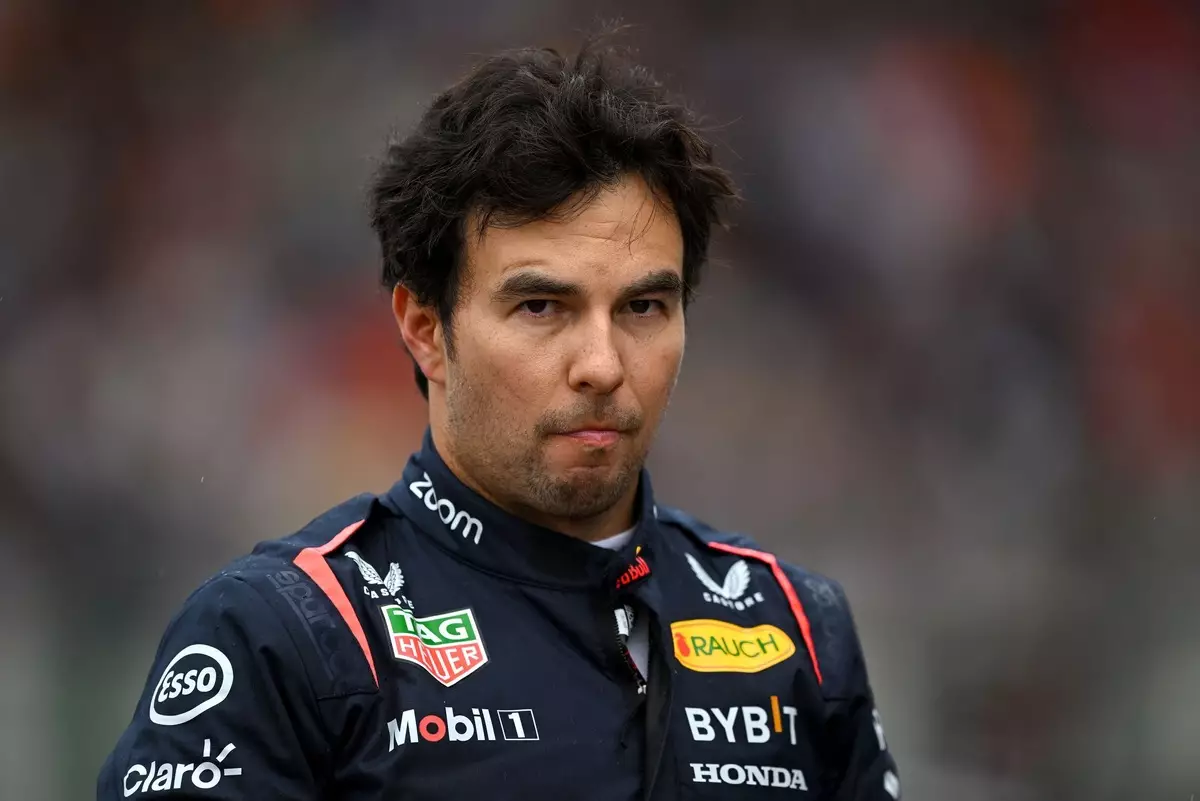In the high-stakes world of Formula 1, the pressure to perform can be overwhelming, and few know this better than Sergio Perez. Following his unexpected exit from Red Bull, the Mexican driver has opened up about the relentless strain he faced during the latter half of the 2024 season. His candid discussions reveal not just a personal struggle, but also highlight a disturbing environment within the Red Bull garage that contributed to his downfall. This ordeal serves as a testament to how the weight of expectations, particularly within a powerhouse team like Red Bull, can lead to unforeseen consequences.
A Toxic Environment Brews
In an insightful interview with Memo Rojas Jr, Perez discussed how Red Bull failed to protect him from the increasing scrutiny that filled the air like poison gas. When a team is as successful as Red Bull, everyone expects results—that means both the driver’s performance and the car’s ability to keep up. After signing a two-year extension to remain with the team through 2026, Perez felt a false sense of security quickly shattered by rampant speculation regarding his future. Despite having a contract, the whispers and pressure only grew louder, leading to an environment steeped in toxicity.
“It would have been easy for the team to protect me,” he said, lamenting the lack of support. Rather than shielding him from the incessant chatter about his job security, Red Bull let the narrative spiral out of control. This lack of advocacy created not only emotional turmoil for Perez but also destabilized the entire garage, where engineers and staff felt the ripple effects of managerial pressure. The race to compete against not just other teams, but also each other, set the stage for dysfunction.
The Consequences of a High-Pressure Culture
For Perez, the consequences were dramatic. The psychological toll of the situation had tangible effects on his performance and relationships within the team. “There was a lot of pressure on my side… it ended up costing us a lot,” he explained, and it’s hard to argue with him. Following his departure, Red Bull’s replacements—Liam Lawson and later Yuki Tsunoda—struggled to meet the substantial expectations set before them. The void left by Perez’s exit was palpable, and it became evident just how monumental his presence had been in the team.
Unable to replicate Perez’s prior performance levels, Lawson’s brief stint ended after just two races, while Tsunoda has also languished under the weight of expectation. These consecutive failures have only reinforced Perez’s allegations about the pressures that the management spawned within the team. Red Bull’s once-formidable reputation seemed to falter as they struggled to maintain their standings in the Constructors’ Championship.
Reflecting on Loss and Regret
Red Bull’s management, specifically Helmut Marko, has publicly pointed fingers at Perez when attributing issues like lost bonuses for team members. However, Perez recently revealed that the same executives now voice regret for their decisions, indicating a troubling dissonance in how they perceive roles and responsibilities. “I know that deep down they are very sorry,” Perez disclosed, suggesting that his dismissal triggered an introspective reconsideration within the team’s ranks.
The irony is not lost here: a team built on a culture of performance and success now appears to be grappling with its own internal conflicts while moving away from the very essence that made it dominant in the past. In a twist of fate, what should have been a high-flying career pivot may have turned into a saga of lost potential for both Perez and Red Bull.
The Loss of Engineering Greatness
Beyond the personal, Perez touches on yet another layer of the narrative: the impact of Adrian Newey’s departure. Once regarded as a cornerstone of Red Bull’s engineering excellence, Newey’s exit to Aston Martin signaled a turning point for the team. Perez asserts that Red Bull began to lose its competitive edge when Newey left, marking a shift in their development trajectory. Unlike the powerhouses of the Mercedes era, Red Bull’s advantage had shifted from vast superiority to fragile competitiveness, revealing cracks in the foundation.
With the combined fallout of managerial pressure, a toxic environment, and key talent leaving, the narrative unfolds into a cautionary tale for any successful organization. The performance of Red Bull, once seen as the pinnacle of F1 prowess, begs the question: can any team maintain elite status if it becomes mired in its internal chaos? For both Perez and Red Bull, the lessons learned in this tumultuous period may resonate across their futures, urging a need for reflection, support, and resilience.

